May 14, 2025 | 10:35 GMT +7
May 14, 2025 | 10:35 GMT +7
Hotline: 0913.378.918
May 14, 2025 | 10:35 GMT +7
Hotline: 0913.378.918
The Do Hai traditional handicraft village in An Lao Commune, Binh Luc District, Ha Nam Province, boasts over a century of craftmanship history. It currently houses more than 100 production facilities, including nearly 10 large-scale businesses. Moreover, the craft of horn processing has provided employment for over 200 local workers.
Nguyen Minh Tri, a young craftsman and a prominent figure in the Do Hai traditional handicraft village, is dedicated to preserving traditional crafts while striving to reinvent local products.

Nguyen Minh Tri, an artisan from the Do Hai handicraft village, holding a giant cattle horn imported from Africa.
According to Nguyen Minh Tri, his handicraft village is currently facing a shortage of raw materials. The village's material supply is entirely dependent on cattle and buffalo horns because they are the only material used in the production of handicrafts, such as jewelry, horn crafts, and hair combs.
The Do Hai village primarily sources its buffalo and cattle horns from the Thuy Ung handicraft village in Thuong Tin District, Hanoi. However, as domestic supplies became increasingly scarce, Thuy Ung village struggled to maintain a stable supply of raw materials. As a result, the village shifted to providing semi-finished products for further processing in Do Hai, which are then resold to Thuy Ung.
“For each order from Thuy Ung, we produce between 200 and 500 items. The dwindling supply of raw buffalo and cattle horns has led to this mutual arrangement between the two villages,” Tri explained.
In response to this challenge, Nguyen Minh Tri and several other local businesses have explored several potential options, including importing horns from Africa for their production needs.
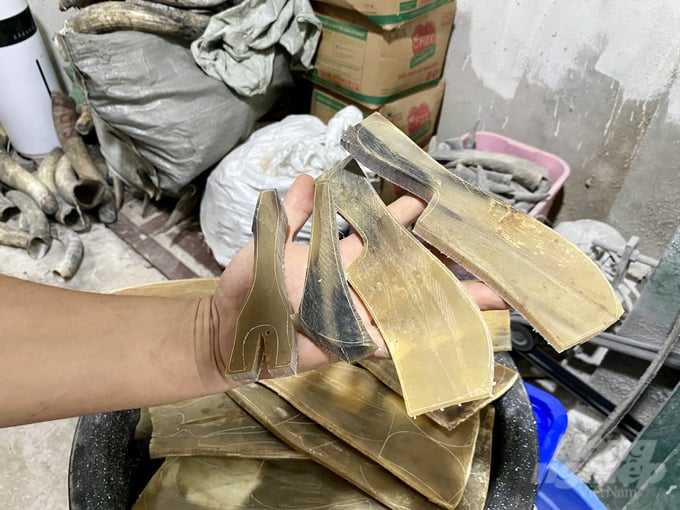
African cattle horns are larger, longer, and thicker than those of Asian cattle, providing significant advantages in production and crafting.
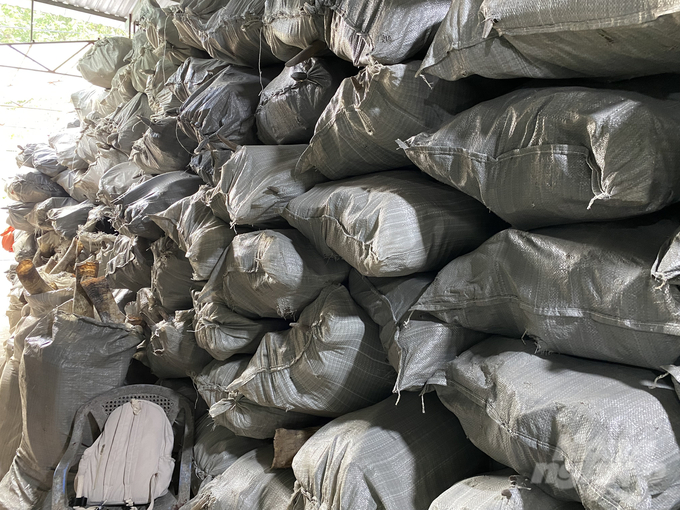
Tri imported over ten tons of African cattle horns with the aim of maintaining a sustainable supply for production.
“The availability of domestic buffalo and cattle horns is limited. With the decreasing local livestock populations, which are primarily used for labor, we have to reach out to companies specializing in the import of horn materials from Africa,” Tri explained.
On average, Tri’s workshop imports two large 40-feet containers of African buffalo and cattle horns every year, totaling nearly 30 tons. African cattle horns are larger and longer than those of Asian water buffaloes. In contrast, Asian buffalo horns are thinner and curved, with the thickest part of the horn being relatively short, resulting in significant material loss during processing.
In comparison, African cattle horns can reach nearly twice the size of Asian buffalo horns. The thick and lengthy tip of these horns, which can exceed 20 centimeters, provides significant advantages in the crafting of high-end artisanal products such as intricate three-piece sets and artistic horn sculptures, which typically carry a higher price point.
“We import African cattle horns into Vietnam via the Hai Phong seaport. The horns do not originate from wild animals, and we have a clear and transparent import purpose that complies with the government’s quarantine regulations,” Tri stated.
As a member of the younger generation of artisans, Nguyen Minh Tri stands out as a prominent figure in the Do Hai horn craft village. Born into a family with three generations dedicated to horn handicrafts, Tri has nurtured a passion for the craft since childhood.
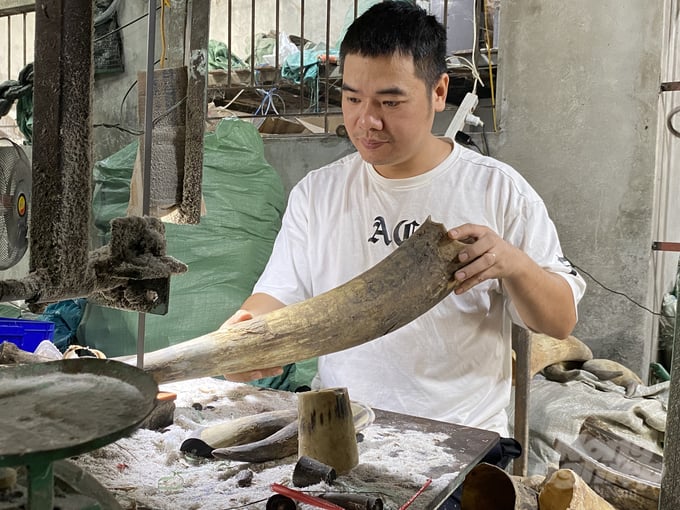
Artisan Nguyen Minh Tri demonstrating a step in the horn crafting process.
In 2021, the Ha Nam Provincial People's Committee awarded Tri with the title of "Outstanding Craftsman of Ha Nam Province." He currently operates a production workshop with a workforce consisting of five skilled craftsmen.
Tri has redefined his approach to the craft with the aim of sustaining and supporting local workers, as well as preserving and developing the village’s traditions in a more sustainable manner. Consequently, Tri has made an active effort to diversify his product designs over the years. Whereas artisans previously focused on crafting high-value decorative and aesthetic items, such as animal figures and three-piece sets, as well as following motifs such as "dragon, phoenix, tortoise, and unicorn" or "pine, chrysanthemum, bamboo, and plum," Tri and his fellow artisans have adopted an approach that favors compact, functional products that serve the needs of the community and promote accessibility to customers. These items include horse figurines, hair combs, hair clips, and jewelry.
Tri’s workshop creates exquisite products that possess unique creative and artistic qualities. On average, his family-run production facility manufactures between 5,000 and 10,000 items every month.

Creating handicrafts from cattle horn requires meticulous attention to detail and skilled workmanship.

In addition to skill, artisans require patience and perseverance.
In addition to supplying production facilities in Thuy Ung, the craftsmen of Do Hai village are enhancing their cooperation in both production and product distribution. Moreover, the village is focusing on expanding its market presence abroad, with a focus on China.
A lack of knowledge regarding online operations has posed challenges for product sales. Prior to the introduction of social media, horn handicrafts garnered little attention from domestic consumers, prompting artisans to travel to China for marketing. However, the advancement of technology, along with online ordering and sales, has enabled villagers to conduct business beyond national borders from the comfort of their homes.
In today’s market, consumer products are growing increasingly simpler and more user-friendly, which necessitate high production techniques and quality standards. The transition from traditional artistic items to modern products, such as massage tools, reflects a shift in demand: these items need to be designed without sharp edges, ensuring smoothness and comfort during use. Notably, several high-quality artisanal products from Do Hai village have successfully entered the Chinese and European markets.
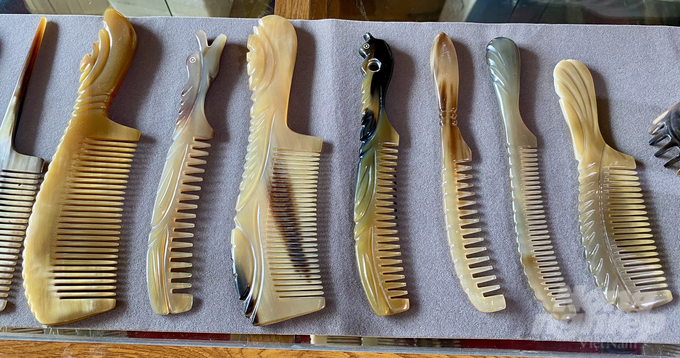
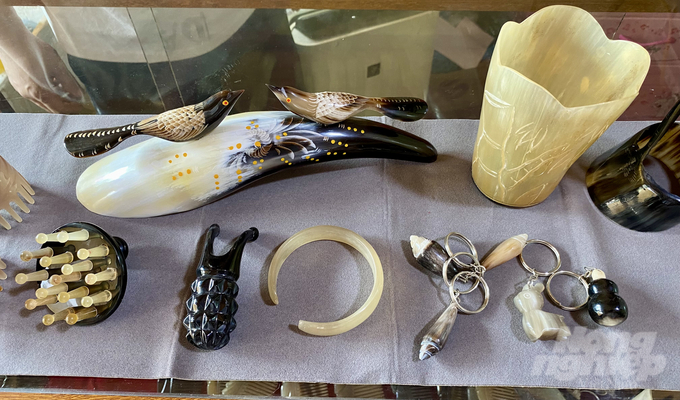
Beautiful handcrafted horn products at Nguyen Minh Tri's workshop.
The current production process has seen a marked transformation from the traditional methods employed by the village’s previous generations, with an increasing integration of machinery. As an alternative to manual techniques such as sanding with leaves or cloth, Tri utilizes various types of machinery imported from China to enhance the production process.
“The horn handicraft industry possesses significant potential for growth in the future, particularly in the field of health-oriented consumer products. These items can meet various needs, including health care in traditional medicine, acupressure, and therapeutic massage.
With the aim of further developing its crafts, the village will enhance trade promotion and product distribution efforts. This initiative will stimulate production as well as preserve and promote the values of the traditional craft of my homeland," Tri commented.
Translated by Nguyen Hai Long

(VAN) U.S. tariffs are not only a 'shock', but also an opportunity for Vietnamese businesses to renew their mindset toward comprehensive development.

(VAN) As Bac Giang lychee enters the harvest season, Minister Do Duc Duy expects that the fruit will contribute greatly to agricultural exports due to standardized production and deep processing.

(VAN) Consumers have shown a preference for free-range eggs, but those farming systems are more vulnerable to biosecurity risks like bird flu.
/2025/05/09/5701-1-184335_301.jpg)
(VAN) Vietnam’s eel exports nearly doubled thanks to a mud-free farming model, opening up new prospects while still facing numerous barriers related to international standards.

(VAN) Minister Do Duc Duy warned that if production is not professionalized and supply chains are not transparent, the U.S. market could become a growth bottleneck.
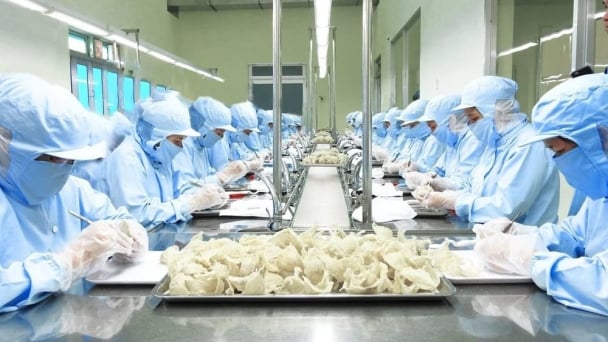
(VAN) Delegating surveillance responsibilities to local authorities is a cost-saving and efficiency-boosting measure that removes a key bottleneck for enterprises, according to Director General Duong Tat Thang.
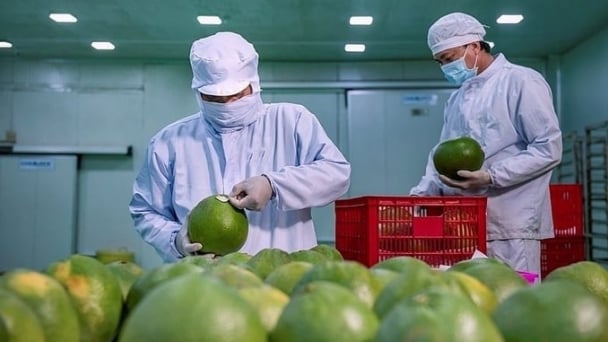
(VAN) Australia's final report on biosecurity has just been released, contributing to expanding the market for Vietnam's fruit with an output of nearly 1 million tons.